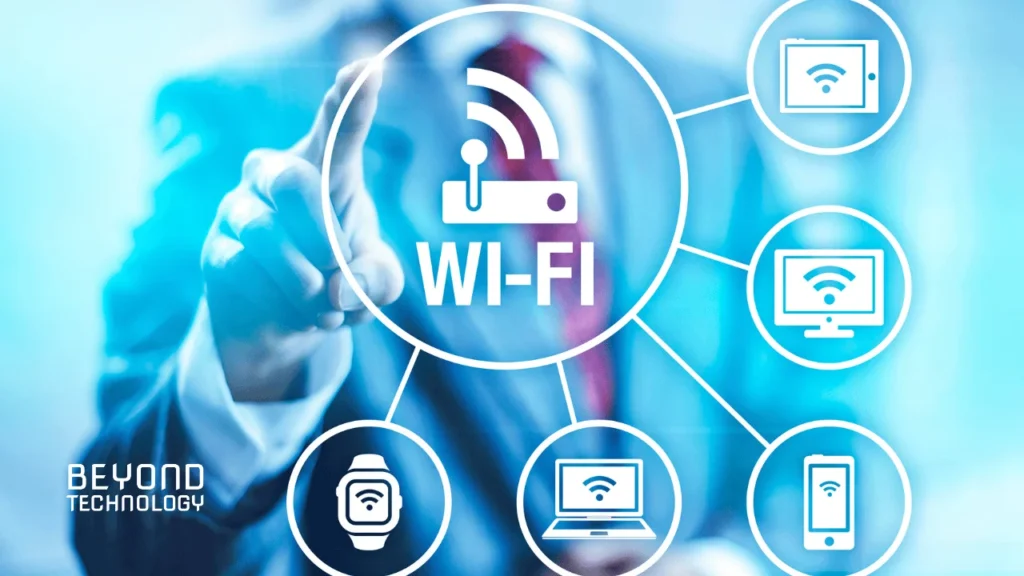Wifi7 is a groundbreaking technology that promises to transform the way we connect devices and access the internet as wireless networks advance. In addition to enhancing speed and responsiveness in residential and commercial settings, this connection development will have a direct influence on the adoption of cutting-edge technical solutions like digital transformation and the Internet of Things (IoT).

Benefits of WiFi7
The release of Wifi7 represents a major improvement above its predecessors. Its capacity to manage more connected devices without affecting performance is one of its most noteworthy advantages. This lowers latency problems and improves network performance by enabling both homes and businesses to run several devices at once. Additionally, this kind of connectivity makes it easier to build networks that function well, which boosts user satisfaction and communication effectiveness.
Suggested Reading: WiFi Networks Driven by AI
Wifi7 features and technical specifications
Wifi7 is a network that uses 802.11be technology, capable of operating in the 2.4, 5, and 6 GHz bands. This range allows devices to connect on clearer frequencies, increasing efficiency and reducing interference. Additionally, Wifi7 incorporates 4K QAM modulation technology, which improves data transmission within the same channel and increases traffic capabilities. These specifications are key to understanding why Wifi7 is an ideal solution for high-demand environments, offering superior performance in terms of speed and connection stability.
Wifi7’s Effect on Connection Speed
Being up to four times quicker than Wifi6, speed is one of the most alluring features of Wifi7. Even in situations with a high user density, this new generation offers an almost continuous connection experience. Applications that need fast data transfer rates, such online gaming, high-resolution streaming, and augmented and virtual reality, particularly benefit from this. Wifi7 can change users’ expectations about the speed and effectiveness of their connections with this speed.
The significance of Wifi7 on the Internet of Things (IoT)
Fast and reliable communications are essential to the growth of IoT, and Wifi7 is a crucial component. Wifi7 makes it possible to integrate many sensors, appliances, and smart devices by enabling devices to interact more effectively and with lower latency. Wifi7 improves device synchronization and responsiveness, which enables IoT networks to function at their best for everything from appliance management to security system control.
Wifi7 and Digital Transformation
Wifi7 has an impact that goes beyond better connectivity; it also propels digital change in households and enterprises. The increasing dependence on digital solutions necessitates a strong and adaptable network to handle cloud-based services, telemedicine, online education, and artificial intelligence applications. Wifi7 makes it easier to create settings that make the most of these technologies, fostering an ecosystem where digitization becomes a constant and accessible reality.
WiFi7 security and required safety procedures
New security requirements are also brought forth by the introduction of Wifi7. The technology makes use of enhanced security protocols, like WPA3, which uses robust authentication and sophisticated encryption to safeguard data. Network security is still a developing issue, though, and in order to identify and eliminate such threats before they have an impact on linked systems, individuals and organizations alike must put in place extra safeguards like firewalls and monitoring systems.
Wifi7’s future and associated technological developments
In addition to being a connectivity improvement, WiFi7 also opens the door to new technologies. It is anticipated that this development will propel the growth of extensive IoT networks and allow the creation of increasingly sophisticated and user-friendly augmented and virtual reality applications. A future in which wireless connections enable people to enjoy more immersive, connected, and secure digital experiences is imagined as more gadgets include this technology.
How to get ready for home and business adoption of WiFi7
It is imperative to adequately plan for the adoption of Wifi7 in order to reap its full benefits. While enterprises should think about infrastructure modifications that facilitate the shift, homes could require appropriate products that support this technology. In order to handle a greater number of connections without compromising performance, this adoption will necessitate strategic planning that takes into account both the acquisition of appropriate equipment and network optimization.
With its ability to revolutionize connectivity, Wifi7 is poised to emerge as a key wireless network technology of the future, creating new opportunities and uses in a world that is becoming more and more digital.
